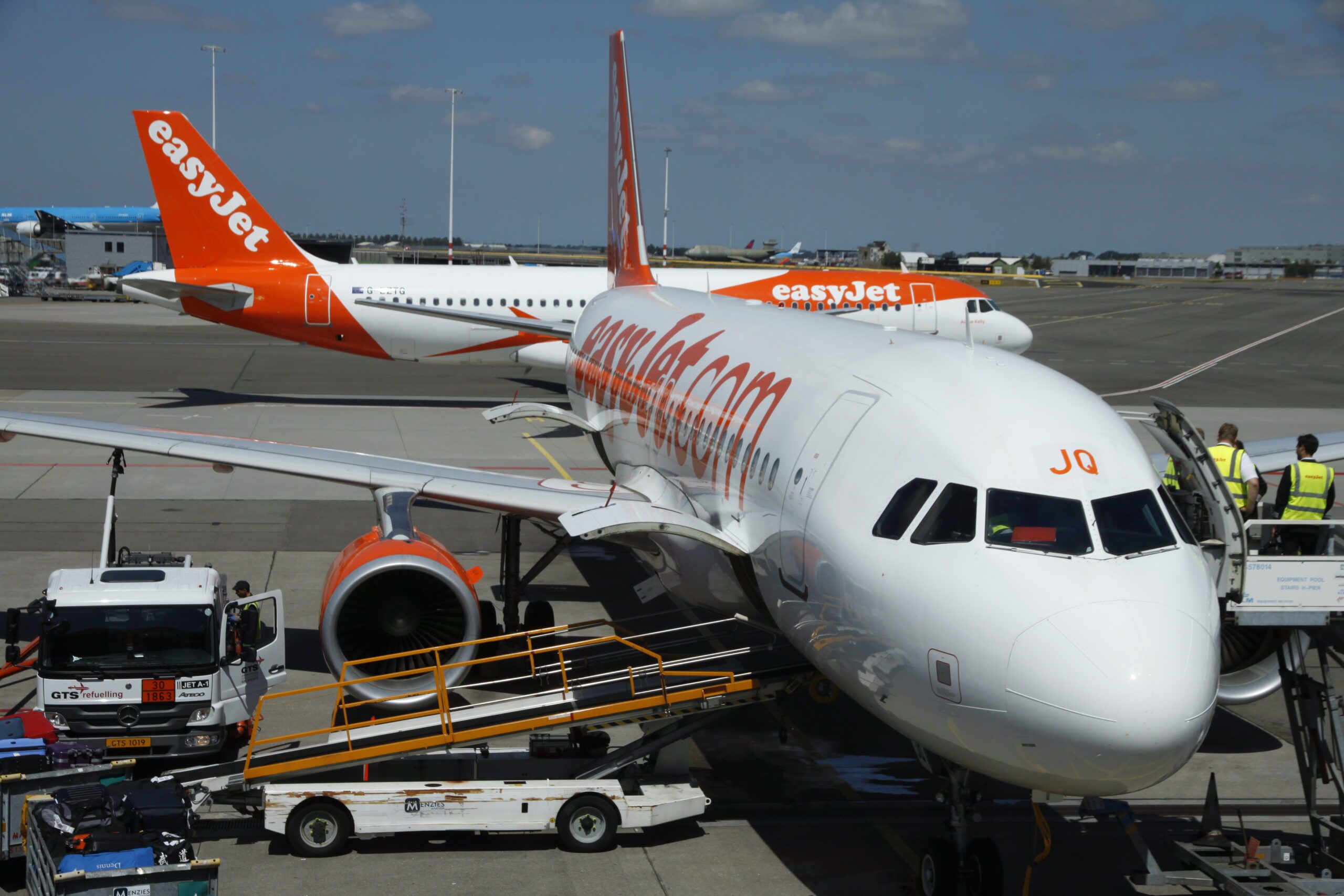
MG 3826 scaled
Easyjet changes course and goes domestic. The low-cost carrier has made some significant strategic choices to make up for lost demand. It tries to make the most of the coming months by deploying more capacity to domestic services in the UK, France, and Italy. The low-cost carrier expects to capture a bigger share on its core markets as legacy carriers reduce their own capacity.
On May 20, easyjet announced its results for the first six months (October-March) of FY21. It reported a total loss before tax of £645 million compared to a negative £353 million in the same period last year. The headline loss before tax was £701 million compared to minus £193 million. Revenues were down by 89.9 percent to £240 million, Passengers carried dropped by 89.4 percent to 4.1 million, with capacity down by 85 percent.
CEO Johan Lundgren is happy that easyjet operated international services again since this week when the UK government opened up air travel with a list of green countries. But his second April-June quarter will still see just fifteen percent capacity, on par with the January-March quarter. Like Ryanair last Monday, easyjet has difficulty in reading the market beyond June, and Lundgren was unwilling to delve into potential capacity numbers. It all depends on the rate of vaccinations within Europe and the lifting of travel restrictions. The green list is the first and important step but more needs to follow to make FY22 successful.
New options in the UK, Italy, and France
That’s why easyjet has been looking at other options. It has shifted capacity to the domestic UK market and launched new services, like Belfast-Inverness, and a number of services from Gatwick, Glasgow, and Manchester to Newquay.
It is doing the same in Italy by opening Bergamo-Olbia (Sardinia) and using recently acquired slots at Milan-Linate for services to Sicily and to the south of Italy. In France, easyjet is adding flights to Corsica and hoping to capture slots at Orly, where Air France has to surrender slots in order to meet requirements from the European Commission.
Birmingham is becoming a key hub in easyjet’s summer schedule as it offers new leisure destinations through easyjet Holidays. At the same time, the carrier closed bases at Southend, Stansted, and Newcastle to reduce costs while opening seasonal bases in Faro (Portugal) and Malaga (Spain) in June.
Gatwick, Milan Malpensa, Paris Orly, Geneva, and Amsterdam Schiphol remain part of easyjet’s core markets and the airline will do everything to defend its strong position at these airports. The airline intends to capitalize on the retrenchment of legacy carriers on these airports as they either have to surrender slots or have reduced capacity themselves.
Cost-cutting measures continue
While CFO Kenton Jarvis is satisfied with the cost reductions made so far, his airline will continue on an aggressive path of more savings and efficiencies. The target is £500 million for FY21 or £0.05 per passenger. Cash burn was £39 million per week in Q1 and £38 million in Q2, but headline costs per seat increased by 148 percent as ownerships costs, crew, and maintenance costs were higher as volumes were lower.
The carrier saved £140 million on crew costs as it reduced its headcount, including a thirty percent reduction in Italy as it moved seven aircraft to other bases. Except for Italy and the final agreement with German unions, the airline has in place revised agreements with staff in all its countries. The new agreements include pay reductions of up to eight percent, a two-year pay freeze with furlough, part-time and seasonal contracts, and a twenty percent improvement in productivity.
Revised agreements were also signed with a number of airports. Easyjet has the flexibility to shift over twenty aircraft to airports that offer discounts on costs. Significant cost savings have also been made on engineering and maintenance through renewed and extended contracts with third parties like Lufthansa Technik and STR Malta while also simplifying 6-12 year checks with the help of Airbus. More cost reductions are planned for FY22.
Fleet number has flexibility
easyjet has £2.9 billion in unrestricted liquidity available. Since the start of the pandemic, it has raised £5.5 billion through a loan from the UK government, sale, and leasebacks of 58 aircraft, bonds, and new equity raising. The airline had debts of £2.0 billion by late March. Capital expenditure will be £700 million this year, increasing to around £1.0 billion in FY23.
The low-cost airline operated 330 aircraft at the end of March, more than the 302 anticipated earlier. This will come down to 310 later this financial year mainly as twelve leased aircraft will be stored. For FY22, the number will be between the contractual minimum of 287 and a maximum of 327 aircraft, with termination or renewal of lease contracts giving flexibility. Easyjet will take no deliveries of new Airbus A320neo-family aircraft this year, but in FY22 intends to receive eight and in FY23 seven. This follows the revised delivery scheme that easyjet agreed with Airbus last year. Lundgren remarked that the original plan included 27 deliveries in FY22 and 35 in FY23.
Views: 18




